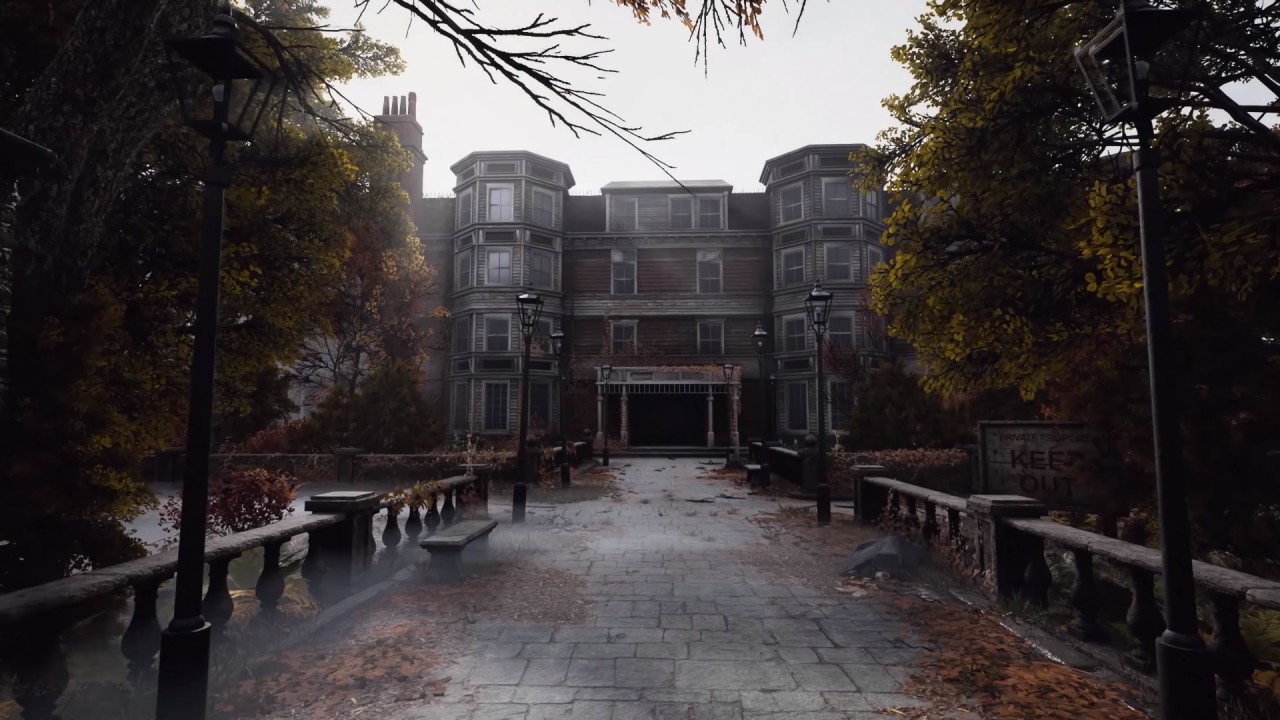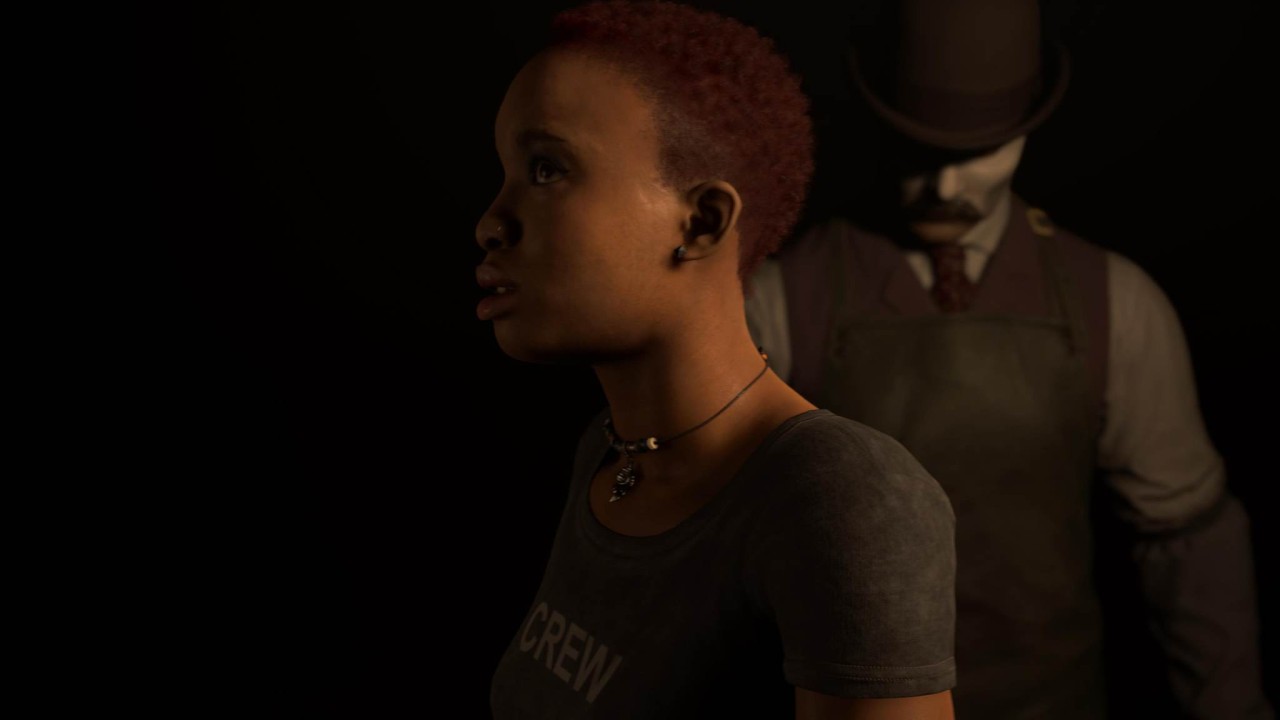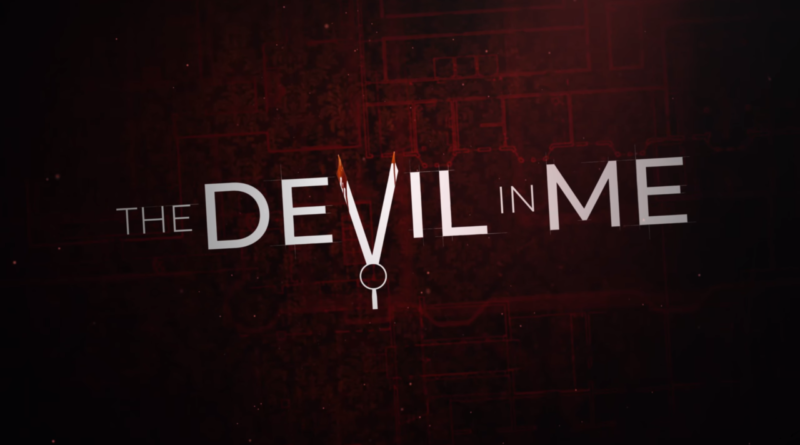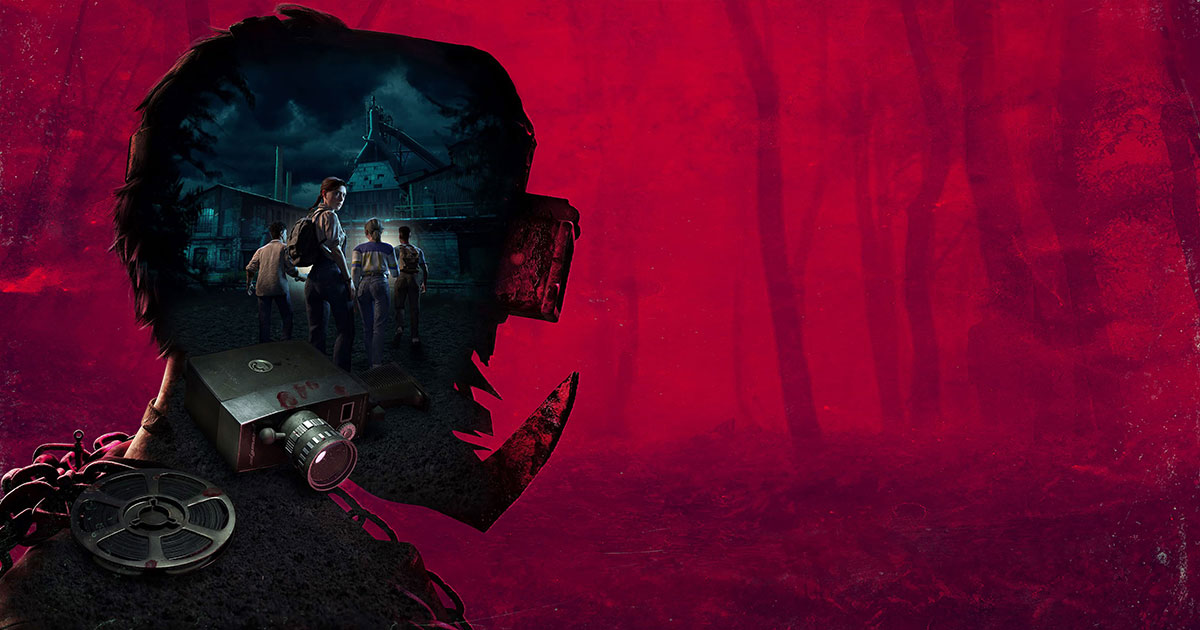The Dark Pictures Anthology: The Devil in Me Review (PS5) – Better The Devil You Know
Supermassive Games’ final entry in season one of their Dark Pictures Anthology series is here. The Devil in Me is the lengthiest, most feature-packed entry in the series, but more doesn’t always mean better.
Dealing with the Devil
The Devil in Me follows a crew of 5 characters making an episode of a true crime series about America’s first known serial killer: H. H. Holmes. The episode isn’t coming out great, with none of the crew being particularly confident that they’ll be able to book a second season of the show. Suddenly, the director receives a call from a mysterious benefactor inviting the crew to a perfect recreation of H.H. Holmes’ notorious “Murder Castle”: a hotel he built and ran in the late 1800s that was filled with traps designed to lead guests to their deaths. The crew go along with it, hoping they can save the show. However, they end up caught in a trap by an H.H. Holmes copycat looking for his next victims.
It’s a solid set-up, and as a fan of true crime documentaries and horror movies with a serial killer/mystery element, The Devil in Me had the strongest pull for me out of the first season of The Dark Pictures Anthology titles.
The cast is all pretty likeable. Each character has pre-developed relationships as they’ve already been working together for a while. Occasionally a line read will sound a little flat, but for the bulk of its runtime, the performances were good, and I wanted to keep them all alive to see how the experience played out.
I also really liked the hotel as a setting. There are a couple of sequences where you use a directional microphone to find your way through the hotel’s shifting hallways. It’s still very linear, you’ll never get lost, but it created a great atmosphere to play in.

What I’ve always liked about Supermassive’s games I have played up to me writing this is that they stick to the vibes of late 90s/early 00s horror movies. It’s a trend that continues with The Devil in Me. They don’t seem to take the stories too seriously, and there’s lots of melodrama and overacting in a way that seems purposeful. The game is never overly scary, relying instead on atmosphere and solid sound design. It’s got a few jump scares here and there, but they hardly ever felt cheap because the game isn’t throwing them at you every 5 minutes.
The Devil in Me does have somewhat of a slow start. Its prologue has you play a newlywed couple in the late 1800s who check into H.H. Holmes’ hotel. It’s a solid little introduction to the hotel and Holmes, but it doesn’t serve much of a purpose in the grander scheme of the game’s story. It’s not a tutorial, as the next hour or two of gameplay introduces The Devil in Me’s new mechanics, and it never comes up again as it takes place more than 100 years ago in a totally different location.
Less is More
Honestly, this set up for my biggest overall gripe with The Devil in Me: it’s just too drawn-out. There’s a much tighter experience here, with a fair amount of scenes that seem to be there to extend the game’s runtime or put in a very simplistic puzzle to let you use the new mechanics they’ve added. But it felt at odds with what Supermassive presented the Dark Pictures Anthology series as being: a playable movie night. Man of Medan clocked in at 4 hours. The How Long to Beat metrics for Little Hope and House of Ashes are 6 hours at best.
The Devil in Me ended up taking me about 8 hours to finish, but it felt much longer because so many scenes don’t need to be there. Too often, sections of the game wouldn’t push the story forward enough to justify their inclusion. It’s two hours too long, and while adding new features is a great way to shake up the formula of the series, it felt like it was detrimental to the game’s pacing.
I will say that for my playthrough, I wanted to keep everyone alive to see as much of the game as possible. There may be variants of a playthrough that shorten the experience, but given that the route I took was the “best” outcome, it still feels like a big enough pacing issue that it actively harmed my experience.
While I kept every character alive, I ended up playing through a few scenes to see some of the death scenes, and the ones I saw were all pretty gnarly. It’s clear Supermassive took some inspiration from the Saw franchise for The Devil in Me, so gorehounds will enjoy that aspect of the game.
Playing with the Devil
There was a lot of talk about the new features that The Devil in Me would be adding to the Dark Pictures to shake up the gameplay. Puzzle-solving, an inventory system, and expanded movement actions like running, jumping and climbing. However, all of these features, besides running, are context-sensitive. You can’t climb any surface you like, nor can you jump unless you’re at a pre-defined jump point.
The inventory is a neat idea, in principle. Each character has specific items which help them get into locked containers or solve a handful of simple puzzles. The inventory system doesn’t ever feel necessary. Why give the option to turn on a light in a darker area when you could have the character turn it on automatically? It rarely adds any stakes or sense of player agency; it’s just an extra step in a process that previous Supermassive games have just done for you.
You can’t use most of your inventory items whenever you want to either because they’re also context-sensitive. There’s never any point where you’re solving multiple puzzles at once; they’re all linear. A key you pick up will always be used at the one door that’s locked and blocking your progression. The puzzles are brain-dead, too. They boil down to either entering a 4-digit keycode you can find in the previous room or flicking some switches in a fusebox in the order displayed on the panel to the left.

I can see why they want to add mechanics to the series, but The Devil in Me feels like the first pass at it. Hopefully, the next game in the series (teased at the end, a standard for The Dark Pictures series) will do a much better job with the new systems.
Clueless Collectables
Much like previous Dark Pictures games, The Devil in me features a variety of collectables. Silver and Black picture frames will grant you a premonition of future events and give you a little hint at how to act when these events come to pass to save a character’s life.
There is also a collection of items littered throughout the game that will fill out your secrets tab. These secrets give the characters further insight into the story. They also hint at the truth behind the mystery of who the killer is and why they kill. However, as is often the case, you’ll likely find yourself figuring out these secrets long before the characters do. It’s frustratingly clear who they are if you find enough of them. However, because the plot necessitates that the characters don’t know, you have to wait for them to reach the same conclusion, which happens way too late.
This meant that there was no real “aha moment”, as it was maybe in the last hour before the cast saw the writing on the wall. Even when they figure it out, it doesn’t go anywhere, making the mystery element fall kinda flat. The secrets are obviously there to give players something else to look for and add some replay value. But I don’t understand the reasoning for having a mystery element in the game just because the other Dark Pictures titles have them, too. Sometimes a good mystery doesn’t need a clear answer.
There’s a new collectable in the form of Obols, a coin used in ancient Greece that was placed on corpses to pay the Ferryman Charon to safely cross the river Styx into the underworld. A fitting piece of iconography for the franchise and one I’m sure will continue going forward. Using these coins unlocks various dioramas of events and characters, which can be viewed in a simple model viewer.
You’ll also unlock some bonus features as you progress. There are a couple of behind-the-scenes interviews and even an hour-long documentary about H.H. Holmes himself. It’s from 2004, is freely available on YouTube, and is completely disconnected from the game, but it’s a nice little extra.
The Devil’s in the Details
Graphically, Supermassive Games have once again knocked it out of the park with The Devil in Me. The performance capture is excellent throughout most of the game, although occasionally, characters can look a little stiff.
The game looks its best inside the hotel, where the devs have been able to control the lighting more, casting harsh shadows, playing with edge lighting, and creating some great cinematography. Outside, it doesn’t match up, as the lighting is very one-note, making everything look a little flat. It still looks great, but 80-90% of the game takes place in the hotel, so the shift is noticeable in the few outdoor scenes.
We are edging ever closer to crossing that uncanny valley, which is especially impressive considering that The Devil in Me is a cross-generation title.

Immersion Broken
During my playthrough, I noticed some technical issues that pulled me out of the movie-like nature of The Devil in Me. There were several instances where animations would stiffen somewhat when transitioning between movements. There are sets of animations that characters share, like giving another a boost up to a higher platform, and the camera would always cut abruptly to it every time. It looked pretty robotic and didn’t match the quality of the performance-captured scenes.
I also had a handful of visual glitches, like a door swinging the wrong way or a character holding an item in a cutscene that would break the animation they should be doing in that scene. The game’s camera also pulls in much too close in small areas, which makes navigating awkward.
There also seemed to be a bug during one crucial choice where a character has to choose who lives and dies. I chose an option that seemed very definitive on what would happen next, only for the opposite to happen. After some digging on youtube to compare the outcomes, and other players didn’t run into the same issue. I played through the scene 4 or 5 times to see if I could get it to work, but it never did. It could have been that my relationship between the two characters was too low for my decision to play out as expected, but if that is the case, then I don’t see why I was given a choice at all.
Supermassive Games’ The Devil in Me lays some new ideas for the Dark Pictures franchise’s future. While well-intentioned, the implementation of these new gameplay ideas isn’t quite there yet. Lacklustre new mechanics and a bloated runtime do more harm than good. The Devil in Me would’ve been better off as a shorter, more refined experience. Great visuals, a solid cast, and a fun slasher premise can only take it so far.

The Dark Pictures Anthology: The Devil in Me is available now on PlayStation 4, Playstation 5 (review platform), Xbox One, Xbox Series X|S, and PC.
Developer: Supermassive Games
Publisher: Bandai Namco Entertainment Europe
Disclaimer: In order to complete this review, we were provided with a promotional code from the publisher. For our full review policy, please go here.
If you enjoyed this article or any more of our content, please consider our Patreon.
Make sure to follow Finger Guns on our social channels. Twitter, Facebook, Twitch, Spotify or Apple Podcasts – to keep up to date on our news, reviews and features.



